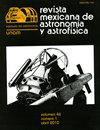光声:对即将到来的日食的可及性和意识
IF 1.7
4区 物理与天体物理
Q3 ASTRONOMY & ASTROPHYSICS
Revista Mexicana de Astronomia y Astrofisica
Pub Date : 2022-08-01
DOI:10.22201/ia.14052059p.2022.54.24
引用次数: 0
摘要
2017年,来自美国各地(以及国外)的人们涌向全食之路,见证美国大日食。2019年和2020年经过智利和阿根廷的南美日食也是如此。虽然日全食通常被认为是一种引人注目的视觉现象,但它并不是观察日全食的唯一方法,对于盲人或视力低下的人来说,有另一种媒介来观察日全食是必要的。LightSound是一种低成本的手持设备,最初是为2017年北美日食而开发的。它有一个非常高动态范围的传感器,在一个被称为声化的过程中将光转换为声音。声音可以在活动期间输出到耳机或扬声器,使整个活动更容易接近,同时以声音的形式捕捉太阳变暗。构建和使用LightSound所需的所有文档和软件都是开源的,可以免费下载和修改。随着2023年和2024年北美日食的临近,我们的目标是在全食的路径上增加LightSounds的数量,使体验更加包容和方便。在天文界,我们通过美国天文学会举办了一系列研讨会,培训新用户建造和使用这些设备,但我们希望通过与图书馆、博物馆、国家公园、女童/男童军和其他组织建立联系,扩大到更普通的受众,我们可以帮助他们为有需要的社区和活动建造必要的设备。除了日食之外,LightSound还具有令人兴奋的潜力,可以作为K-12级别和本科级别的教学工具,并提高人们对声音作为科学中强大而重要的分析方法的认识。本文章由计算机程序翻译,如有差异,请以英文原文为准。
LIGHTSOUND: ACCESSIBILITY AND AWARENESS FOR UPCOMING SOLAR ECLIPSES
People from all over the United States (and abroad) flocked to the path of totality to witness the Great American Solar Eclipse in 2017. The sentiment was the same for the 2019 and 2020 South American eclipses that passed through Chile and Argentina. While a total solar eclipse is typically thought of as a striking visual phenomenon, it is not the only way to observe one, and for blind or low vision individuals, having an alternate medium to observe an eclipse is a necessity. LightSound is a low-cost, hand-held device that was originally developed for the 2017 North American eclipse. It has a very high-dynamic range sensor that converts light to sound in a process called sonification. The sound can be output to headphones or to a speaker during an event to make the entire event more accessible while capturing the dimming of the Sun in the form of sound. All documentation and software needed to build and use the LightSound are open source and free for download and modification. As the 2023 and 2024 North American solar eclipses approach, we aim to increase the number of LightSounds across the paths of totality so that the experiences can be more inclusive and accessible. In the astronomy community, we are holding a series of workshops through the American Astronomical Society to train new users to build and use the devices, but we hope to expand to a more general audience by connecting with organizations such as libraries, museums, national parks, girl/boy scouts, and others groups who we can help to build the necessary devices for communities and events in need. In addition to eclipses, the LightSound has exciting potential for use as a teaching tool at both K-12 levels and undergraduate levels and for raising awareness about sonification as a powerful and important analysis method in science.
求助全文
通过发布文献求助,成功后即可免费获取论文全文。
去求助
来源期刊

Revista Mexicana de Astronomia y Astrofisica
地学天文-天文与天体物理
CiteScore
1.30
自引率
10.00%
发文量
14
审稿时长
>12 weeks
期刊介绍:
The Revista Mexicana de Astronomía y Astrofísica, founded in 1974, publishes original research papers in all branches of astronomy, astrophysics and closely related fields. Two numbers per year are issued and are distributed free of charge to all institutions engaged in the fields covered by the RMxAA.
 求助内容:
求助内容: 应助结果提醒方式:
应助结果提醒方式:


